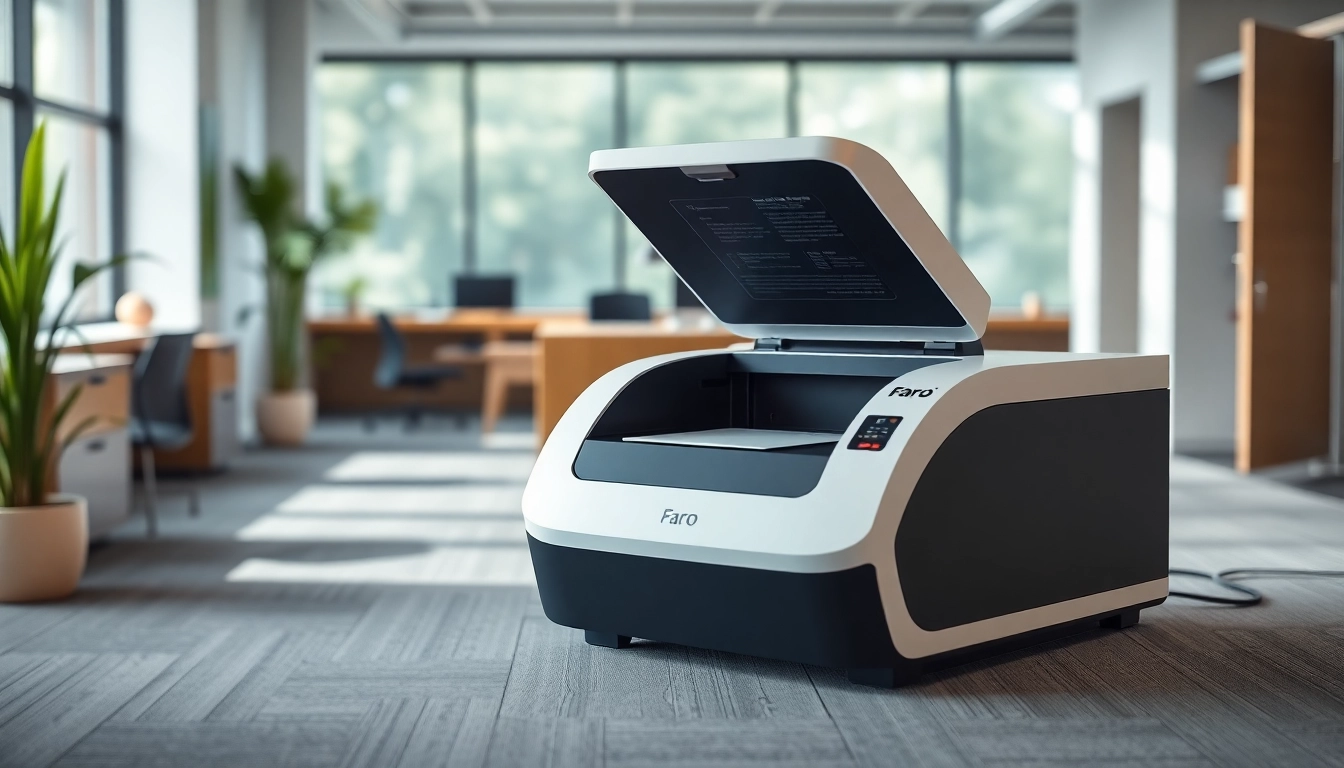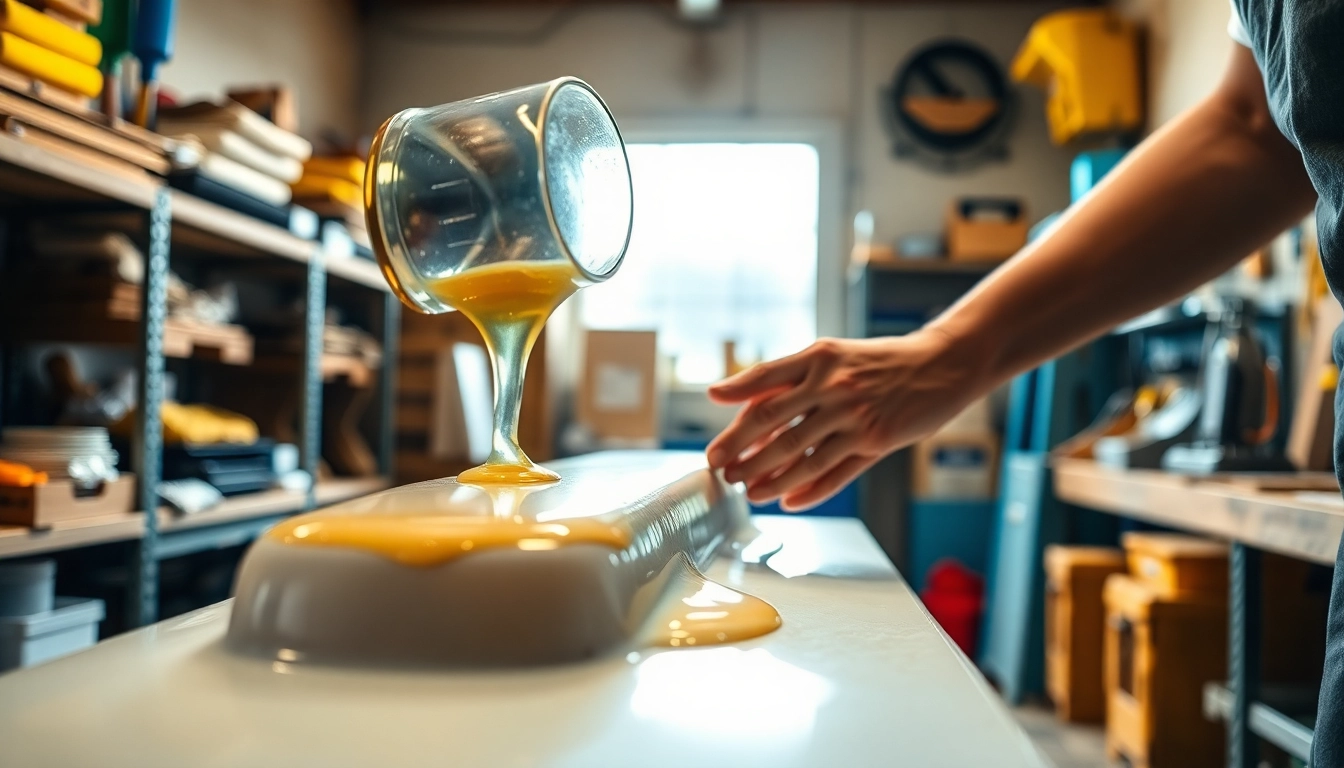Introduction to the Faro Focus S150 Laser Scanner
As technology continues to evolve, the demand for precision measurement tools has grown exponentially, especially in industries such as architecture, construction, engineering, and forensics. The Brand New Faro Focus S150 Laser Scanner For Sale stands out as a leading solution that combines advanced scanning capabilities with user-friendly features. This article will delve into what makes the Faro Focus S150 an industry favorite, explore its key features and applications, and provide insights on purchasing and utilizing this powerful tool effectively.
What Makes the Faro Focus S150 Unique?
The Faro Focus S150 is a high-performance laser scanner known for its portability and accuracy. Unlike traditional surveying instruments, it provides rapid 3D data capture in a variety of environments, making it versatile for multiple applications. With a range capable of capturing details at distances of up to 150 meters, the Focus S150 excels in projects where precision and efficiency are paramount.
Key Features of the Faro Focus S150
- High Precision: The scanner delivers results with an accuracy of up to ±2 mm, ensuring reliable measurements for professional applications.
- Fast Scanning Speed: It can capture data in less than a minute, significantly reducing the time needed for project completion.
- User-Friendly Interface: The intuitive software allows users, even those with minimal training, to operate the scanner easily and manage acquired data more effectively.
- Robustness: The Faro Focus S150 is designed to withstand challenging job site conditions, making it reliable across various industries.
- Cloud Connectivity: Users can access and manage their data efficiently with cloud storage integration, enhancing flexibility in data sharing and collaboration.
Applications of the Faro Focus S150 in Various Industries
The Faro Focus S150 is employed across multiple sectors. Here are a few standout applications:
- Architecture and Construction: Architects and builders use it to create accurate 3D models and as-built surveys, promoting better design decisions and reducing errors.
- Civil Engineering: Engineers utilize the scanner for topographical data collection, aiding in the planning of roads and other infrastructure.
- Forensics: Law enforcement agencies benefit from the S150’s capability to document crime scenes in detail, preserving evidence for investigations.
- Heritage Conservation: Cultural experts use it to digitize historical sites, allowing for their preservation and study without physical intrusion.
Understanding the Technology Behind the Faro Focus S150
How Laser Scanning Works
Laser scanning employs laser beams to measure distances to surfaces, creating a dense 3D point cloud. The Faro Focus S150 sends out laser pulses that hit a target and return to the sensor, with the time taken for this round trip determining the distance. The scanner can capture millions of data points per second, providing an accurate representation of the scanned environment.
Comparative Analysis of Faro Focus Models
Faro has several models in their Focus series, with the S150 being one of the most popular due to its balance of functionality and price. The S350 offers enhanced measurement capabilities and features, while the S70 provides a more cost-effective option. Understanding these differences is crucial for making an informed purchase based on specific project needs.
Benefits of Using Laser Scanners for Detailed Measurements
Laser scanning technology revolutionizes measurement processes by providing:
- Increased Accuracy: Significantly reduces human error compared to manual measurements.
- Time Efficiency: Allows for quicker data acquisition, saving valuable time during surveys and inspections.
- Comprehensive Data Capture: The ability to gather extensive details in a single scan improves overall project quality and decision-making.
- Enhanced Visualization: 3D models and point clouds offer a better understanding of spatial relationships in complex projects.
Purchasing the Brand New Faro Focus S150
Where to Find the Best Deals on Faro Focus S150
When considering a purchase, look at specialized retailers, authorized dealers, or reputable online platforms known for selling surveying and scanning equipment. Comparison shopping can help find competitive prices and ensure value for your investment.
Evaluating Seller Credibility and Product Authenticity
To verify seller credibility, research reviews and ratings of both the seller and the product. Confirm that they offer genuine Faro equipment by checking for certificates of authenticity and warranty options. Avoid third-party vendors with unclear return policies or vague product descriptions.
Reviewing Warranty and Support Options with Your Purchase
A solid warranty and customer support can significantly influence your purchase decision. Faro typically provides extensive warranties on their laser scanners, along with technical support. It’s essential to understand your options before making a commitment to ensure you have assistance when needed.
Effective Utilization of the Faro Focus S150
Setting Up Your Faro Focus S150 for Optimal Performance
For optimal performance, ensure your Faro Focus S150 is set up correctly. Key steps include:
- Choosing the right location: Avoid reflective surfaces and ensure adequate lighting.
- Calibrating the unit: Follow the manufacturer’s guidelines for initial calibration.
- Familiarizing yourself with the software: Practice using the accompanying software for efficient data management.
Common Challenges and Solutions in Laser Scanning
While laser scanning is a powerful tool, users may face challenges such as:
- Interference from Surroundings: Overcoming obstacles like uneven terrain can affect the accuracy of scans. Solution: Select strategic positions for the scanner with minimal interference.
- Poor Data Quality: This can result from improper setup. Solution: Thoroughly review equipment setup and verify calibration before scanning.
- Data Management Issues: Handling large sets of data can be overwhelming. Solution: Utilize robust software tools to manage, filter, and process data efficiently.
Advanced Techniques for Effective Scanning
Maximize the use of the Faro Focus S150 by employing advanced techniques such as:
- Multi-station setups: This approach captures larger areas more effectively and provides a more complete dataset.
- Using targets: Implementing reflective targets can improve accuracy and registration between scans.
- Post-processing strategies: Employ specialized software to refine point clouds, enhancing modeling capabilities and data usability.
Performance Metrics and Future Trends in Laser Scanning
Measuring Success: Performance Metrics for Laser Scanners
Assessing the performance of the Faro Focus S150 involves several key metrics:
- Scanning Speed: Measure how quickly the scanner acquires data, influenced by the complexity of the environment.
- Point Density: This will determine the level of detail captured, influencing overall project quality.
- Data Accuracy: Accuracy is paramount in laser scanning. Regular checks using known measurements can ensure reliability.
Future Innovations in Laser Scanning Technology
The field of laser scanning is evolving with rapid advancements. Expect developments in:
- LiDAR Improvements: Enhanced algorithms will yield better precision and data processing capabilities.
- Integration with AI: Artificial intelligence could facilitate quicker data analysis and interpretation.
- Mobile Scanning Solutions: Advances in portability and connectivity will streamline field operations even further.
Preparing for Upcoming Trends in Industry Applications
As industries continue to adopt laser scanning technology, staying ahead of trends is essential. Organizations should consider:
- Investing in Training: As technology evolves, continuous training ensures staff can utilize new features effectively.
- Collaborating Across Disciplines: Interdisciplinary collaboration can drive innovations in project approaches.
- Monitoring Regulatory Changes: As construction and design standards evolve, ensuring compliance will be critical to success.














Leave a Reply